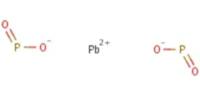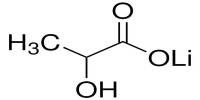Long-standing problems in synthetic chemistry can be solved by engineering enzymes to carry out processes not found in nature, such as converting plant-based oils into valuable biochemicals.
Building on their prior work utilizing light to repurpose naturally occurring enzymes, a team of researchers has discovered a straightforward yet effective method for producing new enzymes with novel reactivity that can produce valuable chemical compounds.
Xiaoqiang Huang, a former postdoctoral researcher at the Center for Advanced Bioenergy and Bioproducts Innovation (CABBI), a Bioenergy Research Center funded by the U.S. Department of Energy, and the Department of Chemical and Biomolecular Engineering at the University of Illinois Urbana-Champaign, led the study that was published in Nature Catalysis.
Huang, an Assistant Professor at Nanjing University in China and a member of the Carl R. Woese Institute for Genomic Biology’s Conversion Theme Leader and CABBI, conducted this research in Professor Huimin Zhao’s group (IGB).
In the work, a biocatalytic reaction known as an asymmetric radical conjugate addition, which is very challenging to produce via chemical catalysis, was made possible by using visible light to activate a designed ketoreductase enzyme.
Chemical reactions can be sped up by the application of catalysts. Biocatalysis is the process by which protein molecules known as enzymes accelerate processes in living organisms.
As a result of biocatalysis’ great selectivity, which enables scientists to use enzymes to operate on particular substrates and produce desired products, researchers have started using it to synthesis useful molecules.
Enzymatic reactions are also quite sustainable, which provides an additional benefit. Compared to chemical catalysts, which often need organic solvents, heat, and high pressure to function, they are comparatively inexpensive, use little energy, and cause little environmental harm.
Enzymes are the workhorses for biological synthesis of fuels and chemicals from renewable biomass. One of the major scientific changes in CABBI’s Conversion research, or bioenergy research in general, is the lack of known enzymes with the desired activity and substrate specificity for the synthesis of target fuels and chemicals. Therefore, there is an urgent need to develop new strategies to discover or engineer enzymes with desired activity or reactivity.
Professor Huimin Zhao
Enzymes are still challenging to work with. Since they are typically restricted to catalyzing reactions that occur in nature, scientists frequently struggle to find the ideal biocatalyst to satisfy their requirements. In order to create new enzyme reactivity, Zhao’s group has concentrated on directing biocatalysis with visible light, a procedure known as “photobiocatalysis.”
An enzyme called ene-reductase (ER) was used as a biocatalyst in a prior study by Zhao and Huang to create a visible-light-induced reaction that produced large yields of desirable chiral carbonyl compounds, which may be used to make high-value chemicals.
The present study expands on that work by employing photobiocatalysis on a different enzyme family, nicotamide-dependent ketoreductases produced by bacteria, and a novel chemical mechanism to produce -chiral esters, a subclass of chiral carbonyl compounds.
Zhao explained that the researchers succeeded in an enantioselective biocatalytic Giese-type radical conjugate addition to convert fatty acids to α-chiral esters by the lighting and evolution of ketoreductase.
When two molecules that are mirror images of each other are formed preferentially in a chemical reaction, this is known as enantioselectivity. Chirality is a fundamental characteristic of organic compounds that has a significant impact on the characteristics of molecules. It has profound ramifications in a variety of fields, including biology, medicine, and material science.
He cited as an illustration how the diverse stereochemistry of organic molecules the spatial arrangement of atoms and its impact on chemical reactions not only greatly contributes to the biological world’s richness but also has a significant impact on many biological processes, such as molecular communication.
The results provide useful applications for the work being done by CABBI to create biofuels and biochemicals from plants like miscanthus, sorghum, and energycane rather than petroleum.
The novel biocatalytic transformation may be able to make value-added bioproducts, like components for soaps or skin-care products, using the fatty acids that CABBI is producing from those plants as starting materials.
“Although we did not target a specific product for further application, this work provides a practical new method that could be potentially applied to upgrading fatty acids,” Zhao said.
“Enzymes are the workhorses for biological synthesis of fuels and chemicals from renewable biomass. One of the major scientific changes in CABBI’s Conversion research, or bioenergy research in general, is the lack of known enzymes with the desired activity and substrate specificity for the synthesis of target fuels and chemicals. Therefore, there is an urgent need to develop new strategies to discover or engineer enzymes with desired activity or reactivity.”
Co-authors on the study included CABBI Postdoctoral Fellow Guangde Jiang of ChBE; CABBI’s Wesley Harrison, a Ph.D. candidate in ChBE and IGB; Jianqiang Feng and Binju Wang of Xiamen University, China; and Jiawen Cui, Xin Zang, and Jiahai Zhou of Shanghai Institute of Organic Chemistry, China. Zhou is also affiliated with the Chinese Academy of Sciences Shenzhen Institute of Advanced Technology, China.
















